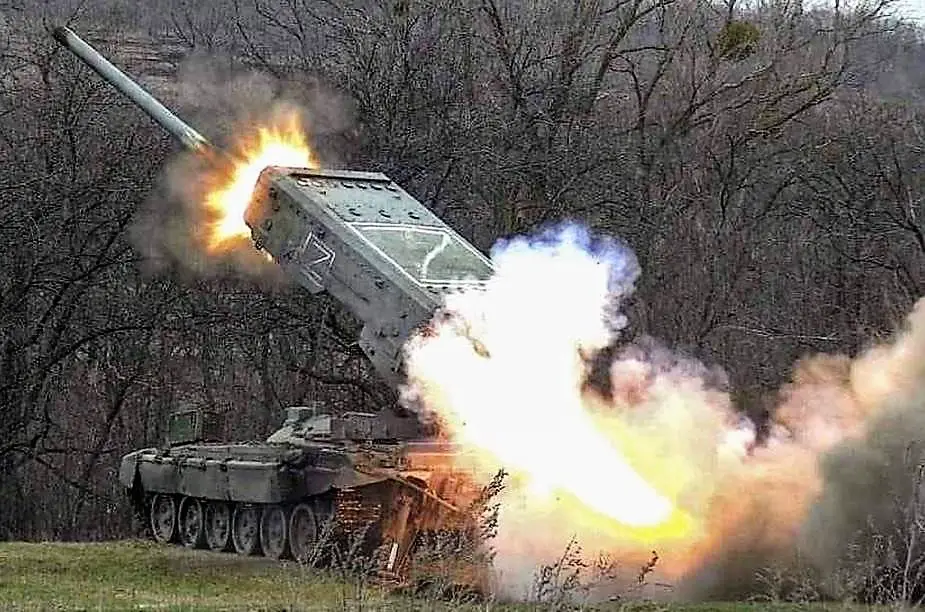- Army
- Conflicts in the world
- Israel - Iran conflict 2025
- Pakistan - India Conflict 2025
- Russia Ukraine War 2022
- Libya conflict day by day
- HAMAS - Israel War 2023
- Operation Serval in Mali French Army
- Sangaris operation Central African Republic
- Sangaris opération militaire République Centreafrique
- Ukraine - Russia conflict
- Syria conflict news
- Defence & Security Industry Technology
- Armies in the world
- Analysis Defense and Security Industry
- Conflicts in the world
- Navy
- Air
Ukrainian army fires TOS-1A Heavy Flamethrower against its former Russian owner
In a tweet dated April 6, Ukraine-Russia Archives reports that, for the first time, Ukrainian defenders used a TOS-1A Solntsepyok against the Russian enemy himself, said Serhiy Bratchuk, speaker of the Odesa OVA. According to him, it happened in the Izyum direction, without mentioning a date.
Follow Army Recognition on Google News at this link

In a tweet dated April 6, Ukraine-Russia Archives reports that, for the first time, Ukrainian defenders used a TOS-1A Solntsepyok against the Russian enemy himself, said Serhiy Bratchuk, speaker of the Odesa OVA. According to him, it happened in the Izyum direction, without mentioning a date. (Picture source: Twitter account of Ukraine-Russia Archives)
Countless pictures and videos posted on social networks and broadcasted on Western TVs (not in Russia) show Ukrainians recuperating an impressive amount of Russian tanks, armored vehicles trucks and other vehicles abandoned by their crews, sometimes in perfect condition, occasionally bogged down in a wood or a field. Many of them are inducted in the Ukrainian army. This is the first time, though, that a picture shows a TOS-1A Solntsepyok, or Heavy Flamethrower, fired by the Ukrainians against its original Russian owner (it still bears its Z marking).
TOS-1 is a Soviet-era 220 mm 30-barrel (original system: Object 634 or TOS-1M) or 24-barrel (Object 634B or TOS-1A) multiple rocket launcher capable of firing thermobaric warheads, mounted on a T-72 tank chassis. TOS-1 was designed to attack enemy fortified positions and lightly armored vehicles and transports. First combat tests took place in 1988 and 1989 in the Panjshir Valley during the Soviet–Afghan War. The TOS-1 was shown for the first time in public in 1999 in Omsk.
TOS-1 is originally not assigned to the artillery units of the Russian Armed Forces but is theoretically found in Russian NBC protection troops. That is why it does not have a GRAU index but rather an RKhBZ index—МO.1.01.00. However, during its current invasion of Ukraine, the Russian army uses it as a common MLRS in artillery missions.


























